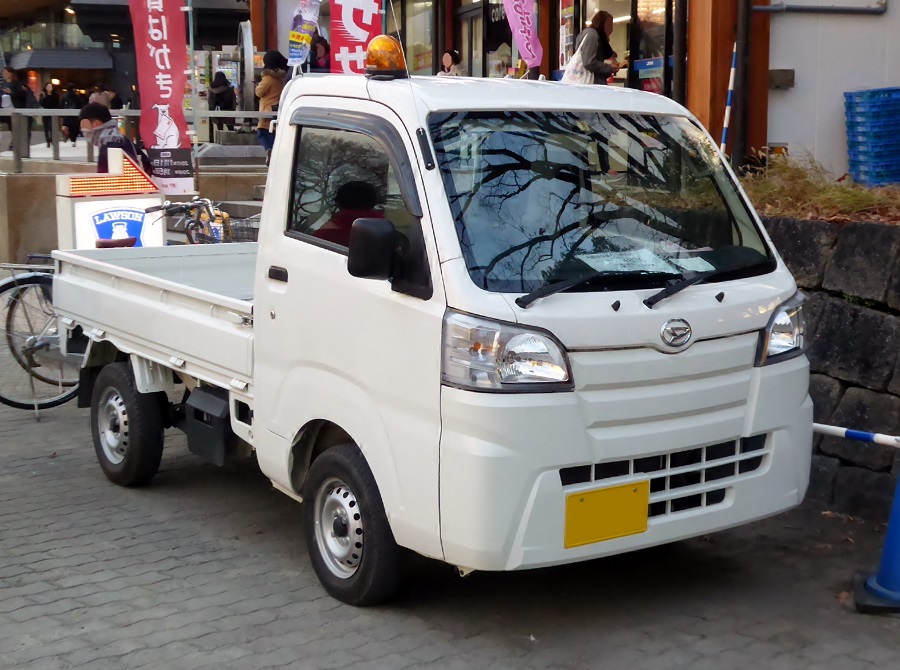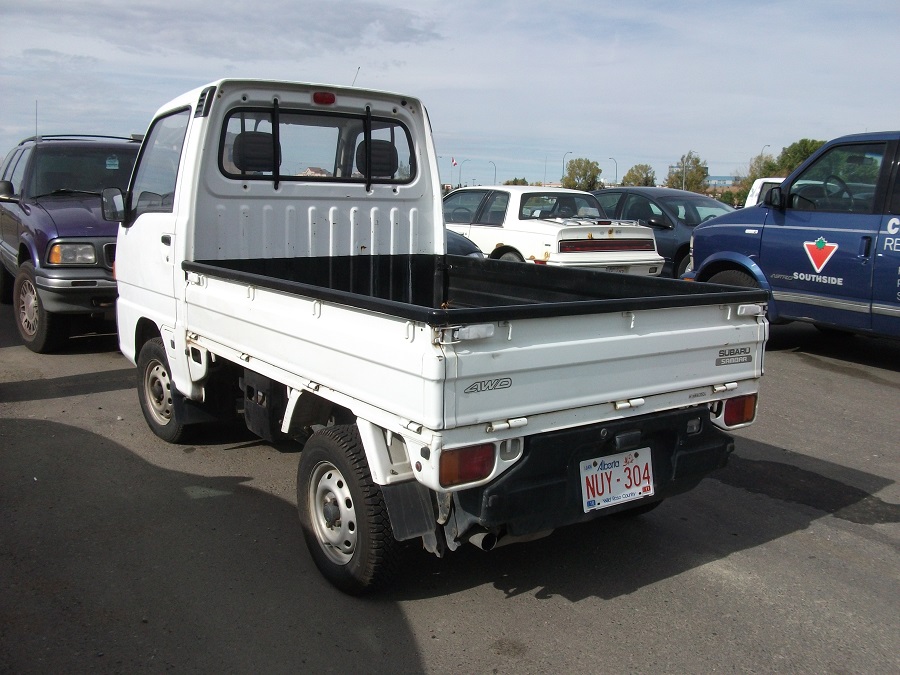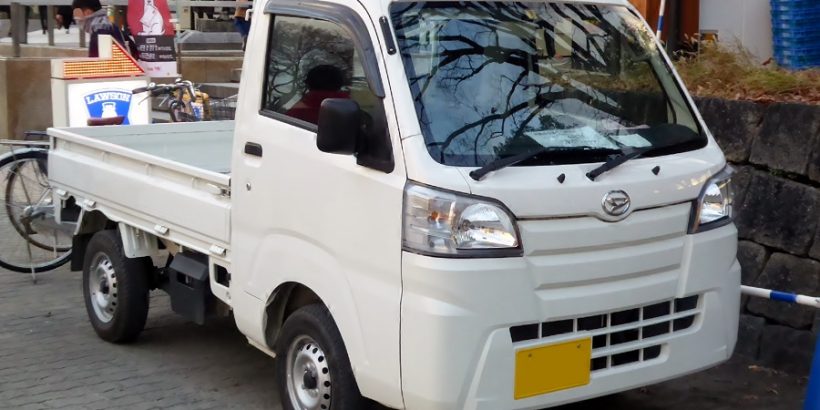Kei trucks, also known as “kei-tora” in Japan, are compact, lightweight vehicles classified under Japan’s kei car category. These small trucks are designed primarily for utility and practicality. They boast impressive fuel efficiency, affordability, and adaptability for various purposes. Despite their small size, kei trucks are highly versatile and are increasingly popular worldwide, not just in Japan.

Origin and Evolution of Kei Trucks
The kei truck originated in Japan in the mid-20th century as a solution to the country’s growing need for affordable and efficient vehicles for small businesses and agriculture. The term “kei” translates to “light” in Japanese, reflecting the truck’s compact size and low weight.
Initially, these trucks were limited to a modest engine capacity and size to comply with strict regulations. Over the years, however, manufacturers have improved their performance and functionality while still adhering to kei car standards. Today, kei trucks come equipped with modern features, making them both practical and comfortable.
Key Features of Kei Trucks
- Compact Dimensions: Kei trucks typically measure around 3.4 meters in length, 1.48 meters in width, and 2 meters in height. Their small size makes them ideal for navigating narrow streets and tight spaces.
- Lightweight Construction: Weighing approximately 700-800 kilograms, kei trucks are easy to handle and highly maneuverable.
- Fuel Efficiency: With engine capacities of up to 660cc, kei trucks deliver excellent fuel economy, making them cost-effective for daily use.
- Versatility: Kei trucks can be adapted for various purposes, including agriculture, delivery services, construction, and even recreational activities.
- Affordable Maintenance: Parts and servicing for kei trucks are generally inexpensive, reducing long-term ownership costs.
Popular Uses of Kei Trucks
1. Agriculture
Kei trucks are a staple in Japanese agriculture due to their ability to transport goods and tools across fields and farms. Their small size allows them to navigate through narrow paths, making them ideal for rural settings.
2. Delivery Services
With their compact design and fuel efficiency, kei trucks are perfect for small-scale delivery services. They are commonly used by local businesses for transporting goods within cities.
3. Construction
Despite their modest size, kei trucks are surprisingly capable of hauling construction materials. Their durability and adaptability make them suitable for light construction work.
4. Recreational Activities
In recent years, kei trucks have gained popularity among outdoor enthusiasts. They are often modified into camper vans or used to transport recreational gear.
Advantages of Kei Trucks
1. Cost-Effective
Kei trucks are affordable to purchase, operate, and maintain. Their low fuel consumption and inexpensive spare parts make them a budget-friendly option for businesses and individuals alike.
2. Environmentally Friendly
Due to their small engines, kei trucks produce lower emissions compared to larger vehicles, making them an eco-friendly choice.
3. Ease of Handling
Kei trucks are easy to drive and park, even in congested urban areas. Their compact size and excellent turning radius provide unparalleled maneuverability.
4. Customizability
Owners can customize kei trucks to suit their specific needs. Whether it’s adding storage compartments, upgrading tires, or modifying the body for specialized use, the possibilities are endless.
Popular Kei Truck Models
1. Suzuki Carry
One of the most iconic kei trucks, the Suzuki Carry is known for its reliability and robust build. It’s a favorite among farmers and small business owners.
2. Daihatsu Hijet
The Daihatsu Hijet offers a perfect blend of functionality and comfort. It’s widely used in various industries, including agriculture and logistics.
3. Honda Acty
Renowned for its fuel efficiency and compact design, the Honda Acty is a popular choice for urban deliveries and light transportation.

4. Subaru Sambar
The Subaru Sambar stands out for its unique design and excellent performance. It’s highly sought after by enthusiasts who enjoy modifying their kei trucks.
Global Appeal of Kei Trucks
While kei trucks are primarily designed for the Japanese market, their popularity has spread to other countries. In the United States, for instance, kei trucks are often imported as off-road vehicles for farms and recreational use. Their affordability and practicality have also made them a hit in developing countries where budget-friendly utility vehicles are in high demand.
Regulations and Compliance
Kei trucks are subject to strict regulations in Japan, including size, engine capacity, and speed limits. These regulations ensure that the vehicles remain lightweight and efficient. When exported, kei trucks must comply with the destination country’s roadworthiness and emissions standards.
Tips for Buying a Kei Truck
- Assess Your Needs: Determine the primary purpose of the kei truck, whether it’s for personal use, agriculture, or business.
- Check Import Laws: If you’re importing a kei truck, ensure it complies with local regulations.
- Inspect the Vehicle: Look for signs of wear and tear, especially in used models. Pay attention to the engine, tires, and suspension.
- Consider Maintenance Costs: Research the availability and cost of spare parts in your area.
Future of Kei Trucks
As the demand for eco-friendly and affordable vehicles grows, kei trucks are likely to gain even more traction globally. Manufacturers are also exploring electric and hybrid versions of kei trucks, aligning with the global shift toward sustainable transportation.
Conclusion
Kei trucks are a testament to Japanese innovation, combining practicality, efficiency, and affordability in a compact package. Whether you’re a farmer, business owner, or outdoor enthusiast, a kei truck can be a valuable addition to your fleet. Their versatility and low operating costs make them an excellent choice for a wide range of applications. As their popularity continues to rise, kei trucks are set to become a global symbol of smart, sustainable transportation.
